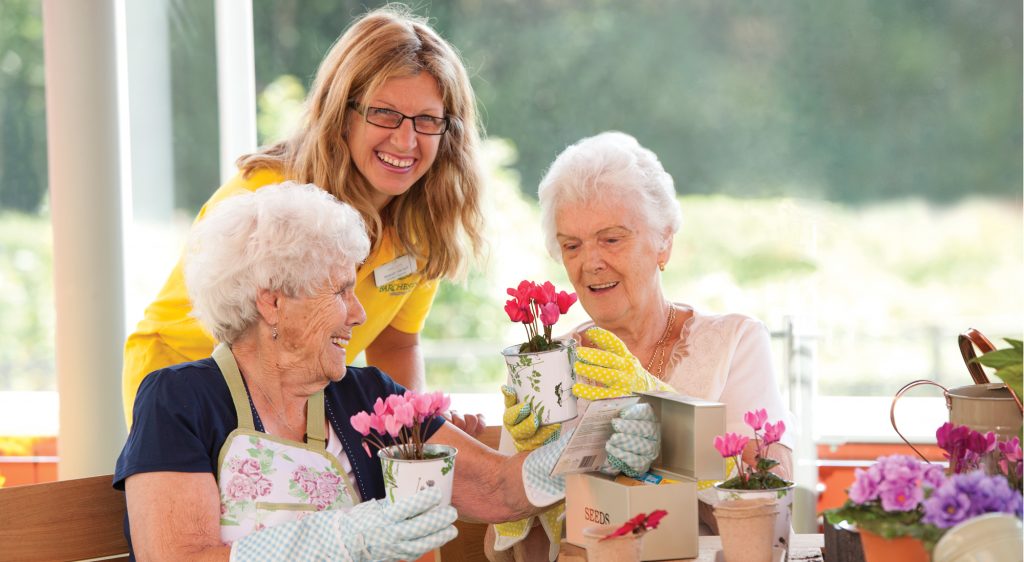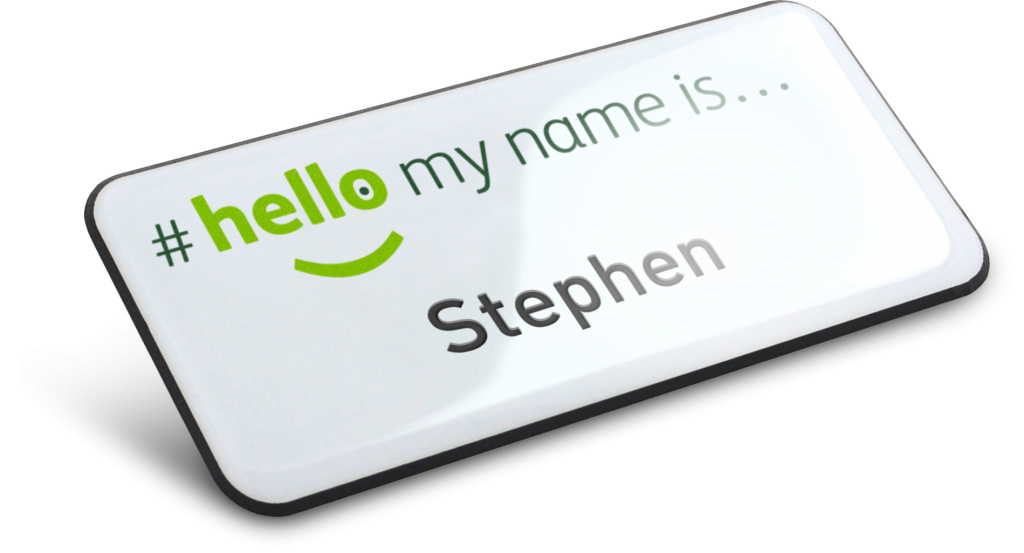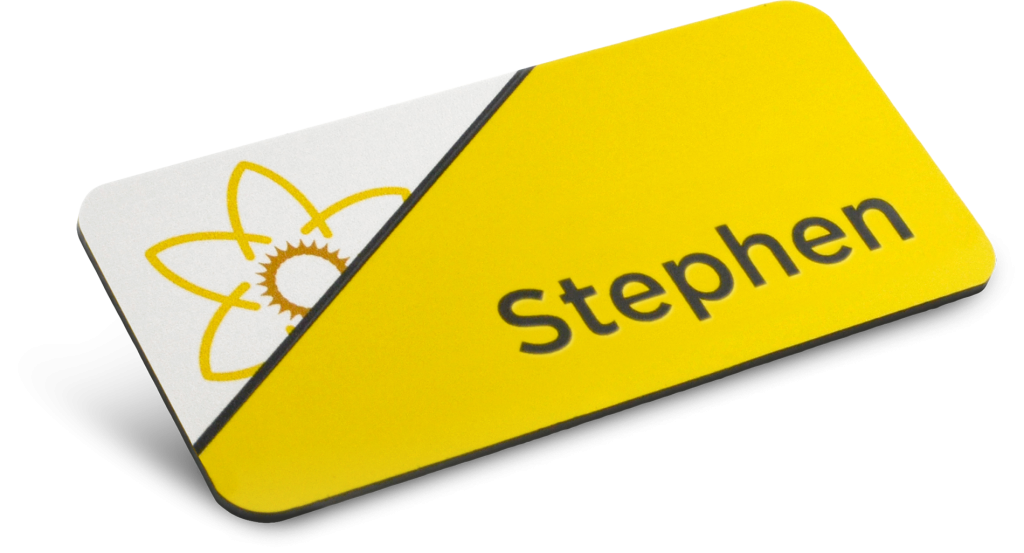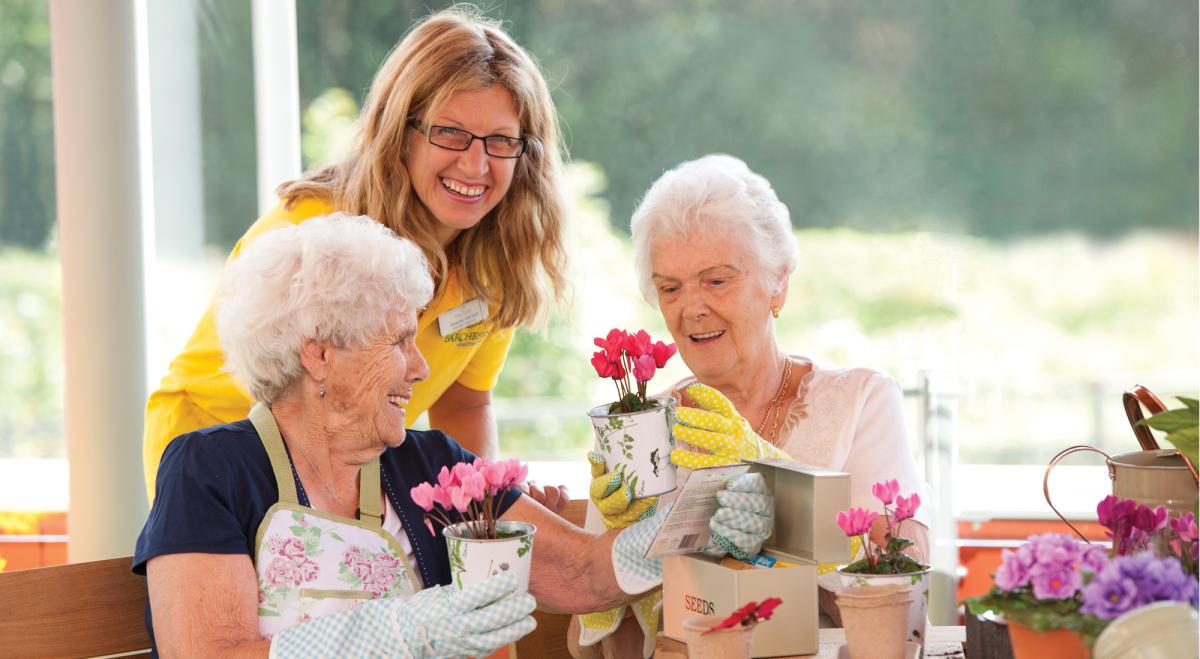We use cookies to make your experience better. To comply with the new e-Privacy directive, we need to ask for your consent to set the cookies. Learn more.
Top tips to help you design a dementia-friendly name badge for your care home

Source: www.barchester.com - name badge in dementia-friendly care home environment.
Names help us connect and start conversations. They help build trust and encourage us to put confidence in one another, especially in unfamiliar circumstances or care settings like hospitals and care homes. Name badges are a familiar sight in many of these environments yet often aren’t helpful for those who need them most. For people living with dementia or who have memory loss, a name badge can improve interactions and alleviate frustration and worry at not remembering a name. We’ve drawn on our many years of experience in designing name badges and working with care homes across the UK, to put together our top tips for designing a dementia-friendly name badge for your care home:
1. Size matters
When it comes to deciding on the dimensions of the name badge, it’s advisable to select a size that will make it more noticeable. The standard care home name badge doesn’t lend itself to a larger font and can be easily missed from a distance too. So, choose a size that is both practical to wear and easy to spot.
2. Improve readability with the right material and finish
The material you choose for your name badge should take account of the environment. Many care homes feature bright, artificial light as well as spaces where natural light fills the room. Make sure the name badge material isn’t likely to cause reflection and make it difficult to read. We suggest avoiding shiny metallic or domed finishes.
3. Pick colours carefully
A brightly coloured badge will help it stand out against clothing so it can be seen more easily. Think about the finish of the colour too – a matte finish means less shine and makes the badge easier to read.
4. Consider contrast
The retina can more easily pick out certain colour text on a particular colour background, and so contrast is crucial to make the badge more legible. A good example is black text on a yellow background. White or light-yellow text on a dark background works well too.
5. Use a legible font
Avoid decorative fonts at all costs - italics, flicks and curls can make the font very difficult to read. The spacing of the letters also makes a difference. Keep the spacing wide and allocate an equal amount for each letter. A good example is a font such as Courier. Using a large font size, such as 48, and bold type also increases readability.
6. Keep it clutter-free
Too much information can be confusing for someone living with dementia. Keep the content of the badge to a minimum to avoid distraction. Ideally, the front of the badge should feature only the caregiver’s first name. If a logo must be included, keep it small. If you need to add policy-driven information to the badge, put it on the reverse to keep the front relevant and uncluttered.
7. Find the right words
If you must include the caregiver’s job title on the badge, consider the words you use. Make sure they make sense to the person reading them - sometimes job titles can be difficult to understand, especially for someone living with dementia. Help them feel safe and cared for with the right words. Keep them simple and make it easy to for them to understand the caregiver’s role. Plus, keep the font size small so as not to detract from the name.
8. Finish with an appropriate fixing
If you’re going to great lengths to design a highly visual dementia-friendly name badge, make sure it can easily be seen when it’s worn. It’s helpful for everyone to wear their name badge in the same place all the time too - it helps people remember where to look for it when they can’t recall a name. Be sure to choose a fixing which allows the badge to be worn as close as possible to eye level. But balance that with the safety of those around you. For example, if you’re likely to come into contact with anyone wearing a pacemaker, it’s advisable to avoid magnetic fixings.
By taking a person-centred approach and considering the challenges a person living with dementia might face, we can understand what makes a name badge dementia-friendly. Here’s an example of a name badge designed especially for a care home setting.


You can design a dementia-friendly name badge for your care home online at www.badgemaster.co.uk or by speaking to our expert advisors on 01623 723112 and working with our in-house design team.

